Table of Contents
- Criteria For Selecting These Adventure Touring Bikes
- A Bit More On Adventure Touring Bikes
- 26+ 27.5+ 29+ Adventure Touring & Bikepacking Bikes
- 29″ Adventure Touring & Bikepacking Bikes – Drop Bar
- 29″ Adventure Touring & Bikepacking Bikes – Flat Bar
- 27.5″ Adventure Touring & Bikepacking Bikes – Drop Bar
- 27.5″ Adventure Touring & Bikepacking Bikes – Flat Bar
- 26″ Adventure Touring & Bikepacking Bikes
Are you looking for a bike that will be able to take you deep into the wilderness? Perhaps you’re planning an expedition across a remote African desert or maybe it’s a rough touring route through the Peruvian Andes. Whatever your plans, today I’ll be introducing you to as many adventure touring bikes as possible.
Let’s explore!
Criteria For Selecting These Adventure Touring Bikes
Clearance for >2.20″ Tyres
I’ve settled on this width because it allows for standard mountain bike tyres to be fitted.
Front and Rear Rack Compatible
While many of you probably have the intention to use bikepacking bags – having rack compatibility simply gives you more options, and that ain’t a bad thing.
Ample Bidon and Cargo Cage Mounts
Most bikes in this list have 3+ bidon mounts, including a couple of cargo cage mounts.
Fender Compatibility Preferable
Some of you may scoff at the idea of taking fenders on a bike adventure, but the number of times I have issues with mud or debris is limited to a couple of times per year. Fenders keep you and your bike nice and dry, so don’t write ’em off just yet.
A Bit More On Adventure Touring Bikes
I’ve split this list into categories based on wheel diameter, tyre width and handlebar style. I think these are some of the most important characteristics of an adventure touring bike, as they largely determine the type of terrain your bike will handle. I generally recommend flat bars for adventure touring, you can read why HERE.
All tyre widths and diameters can be fast and capable as long as they’re appropriately matched to the terrain. Check out my resource on the most durable bikepacking tires to get a good idea for what might suit you best.
Most of the bikes in this list are constructed with steel tubing, but there’s a handful of titanium, carbon and aluminium bikes in there too. Given adventure touring bikes use large tyre volumes, you can expect a similar level of comfort across the board. I’ve got an in-depth resource on bike frame materials and durability found HERE.
*This resource was originally published in 2015 but has been updated in December 2018
26+ 27.5+ 29+ Adventure Touring & Bikepacking Bikes



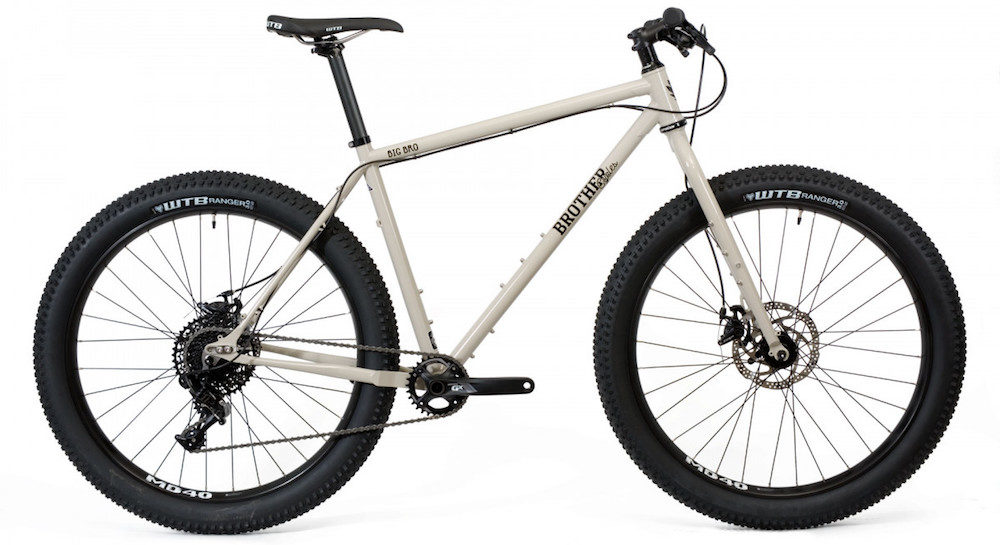
























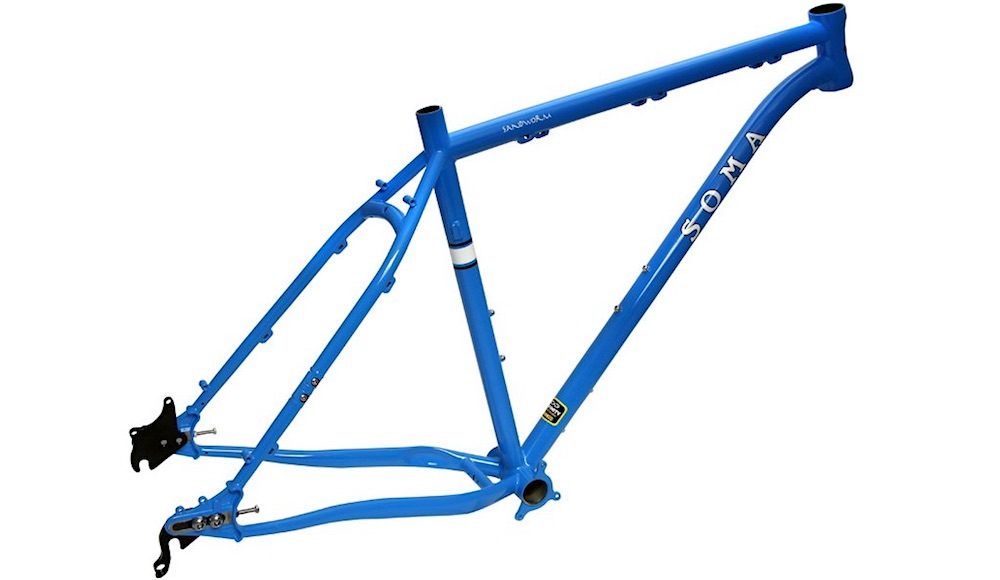

More Bikes:
Shand Bahookie Dropbar Frameset – 27.5×3.0 – £1495
29″ Adventure Touring & Bikepacking Bikes – Drop Bar








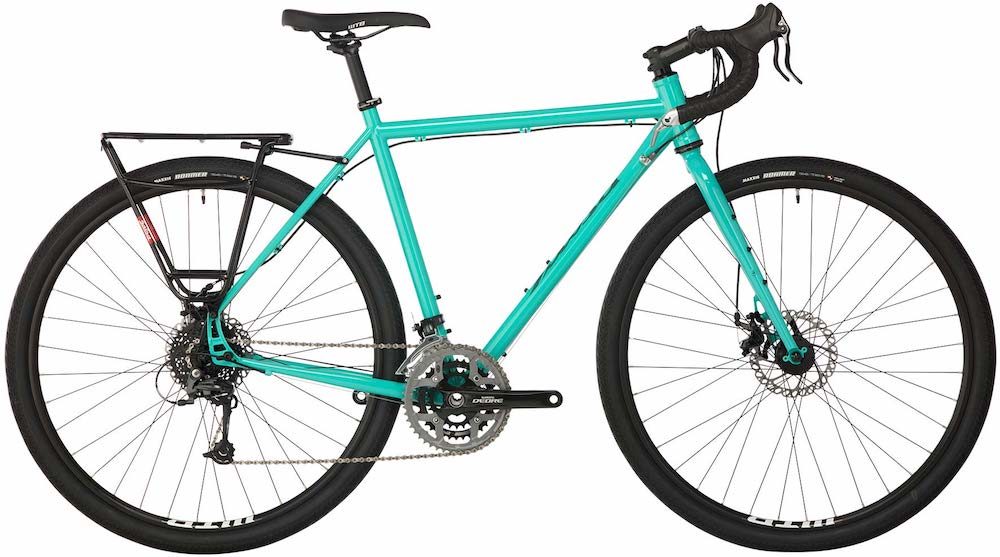

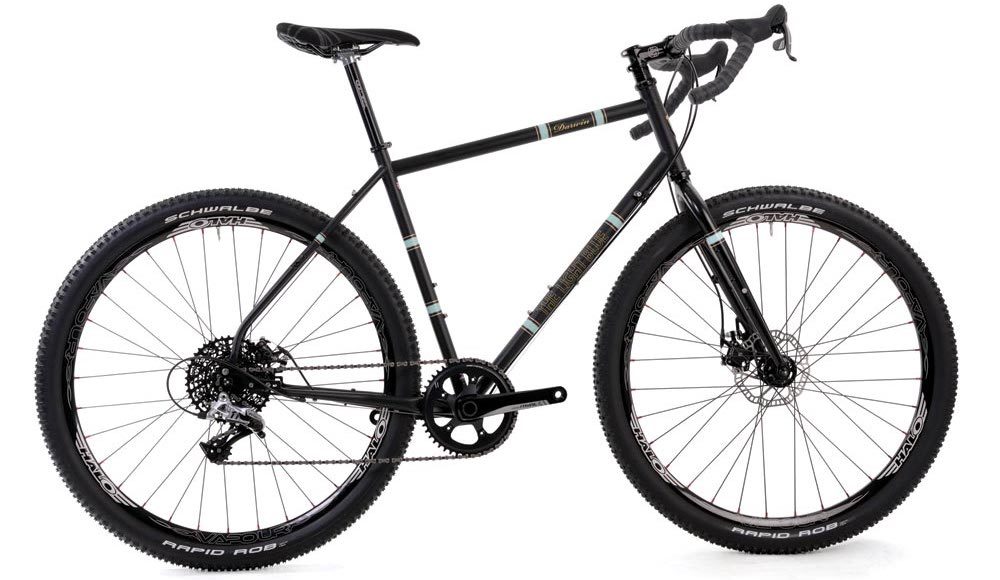



More Bikes:
Rivendell Atlantis 59-62cm Frameset – 29×2.2 – US $1500
V-Pace TMX Frameset – 29×2.25 – €1490
29″ Adventure Touring & Bikepacking Bikes – Flat Bar









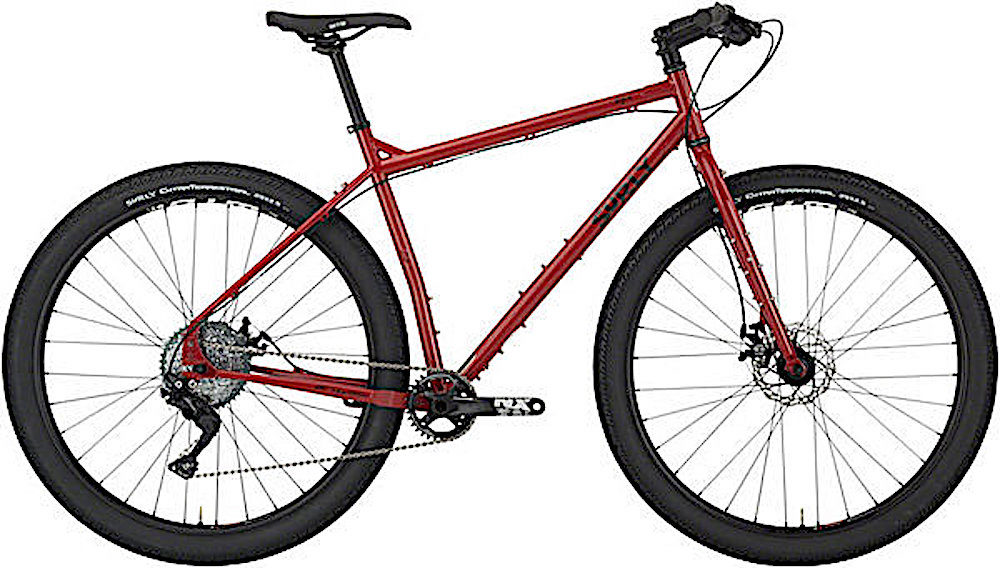
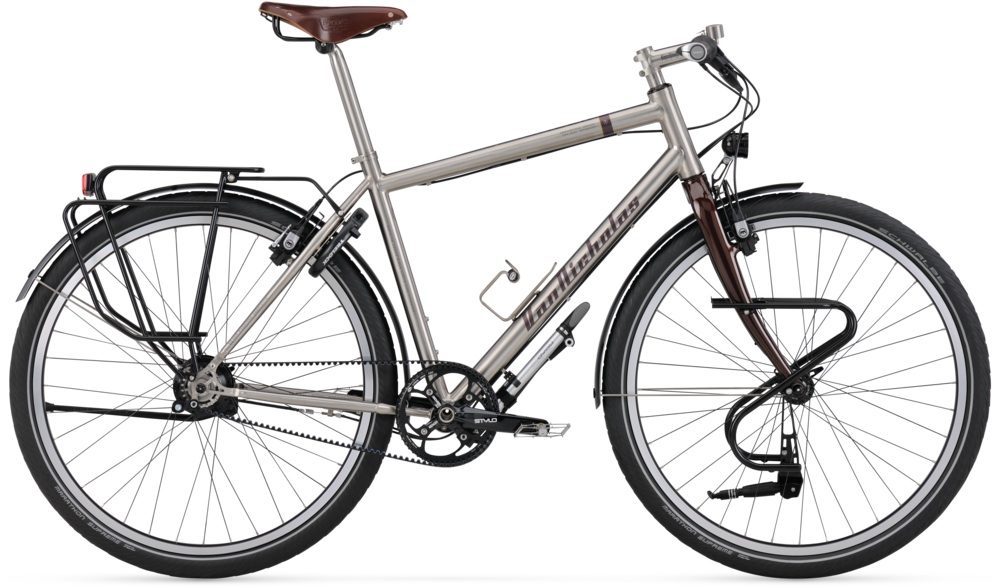
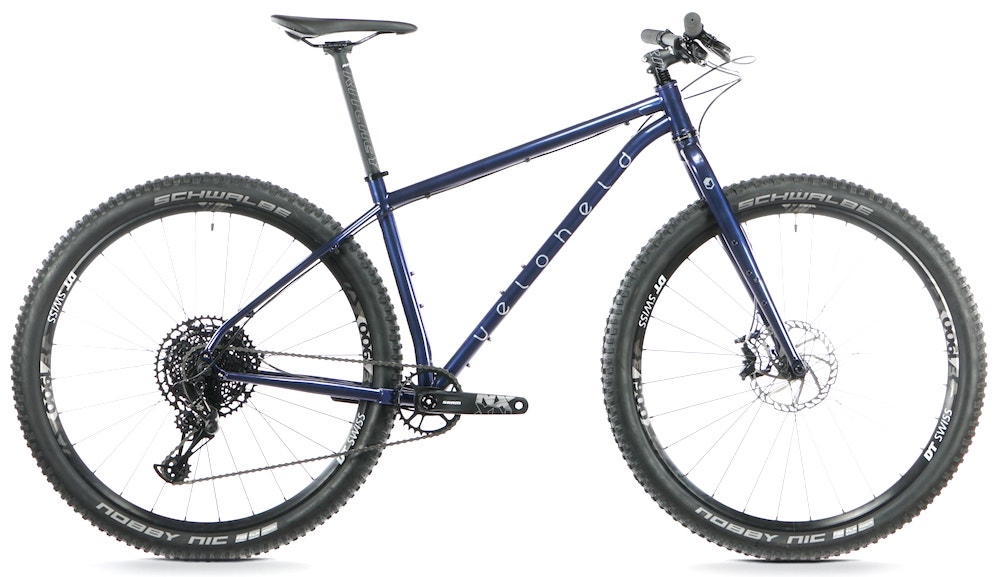
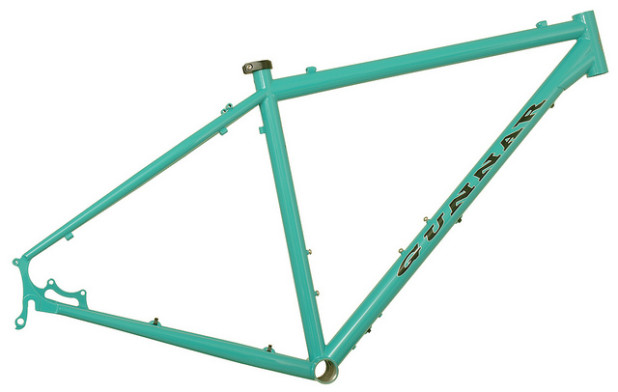
27.5″ Adventure Touring & Bikepacking Bikes – Drop Bar
















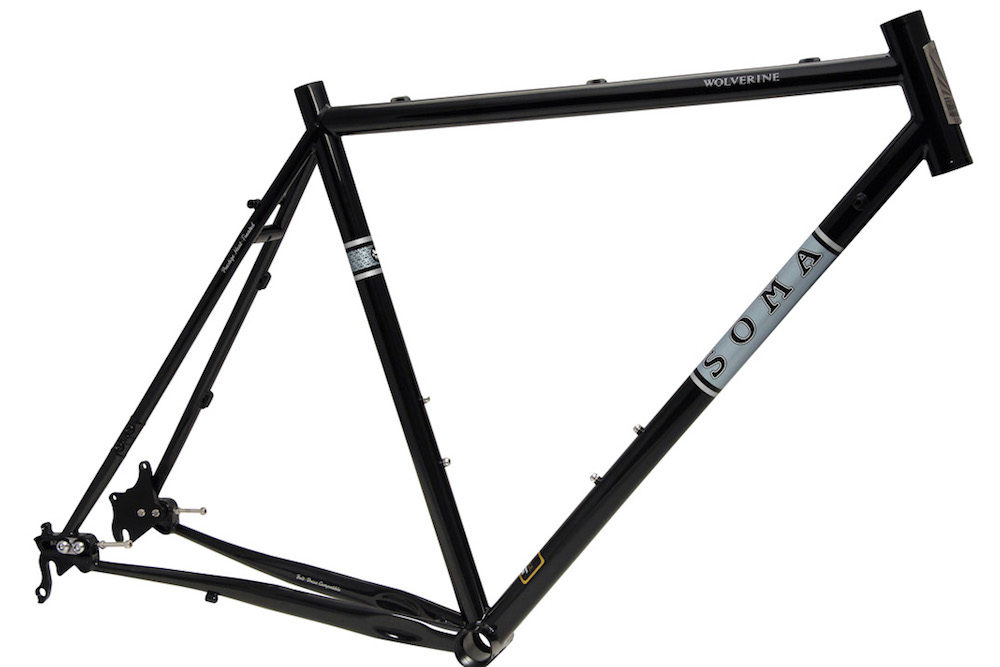
More Bikes:
Crust Dreamer Frameset – 27.5×2.2 – US $1675
Monk Bicycle GXT Frameset – 27.5×2.3 – €1380
Penhale Gypsy Frameset – 27.5×2.3 – US $599
Pipedream Cycles A.L.I.C.E Frameset – 27.5×2.2 – £499
Rivendell Atlantis 47-56cm Frameset – 27.5×2.2 – US $1500
Smeltzer Bikes Thee Gifford Frameset – 27.5×2.2 – US $2300
27.5″ Adventure Touring & Bikepacking Bikes – Flat Bar






26″ Adventure Touring & Bikepacking Bikes
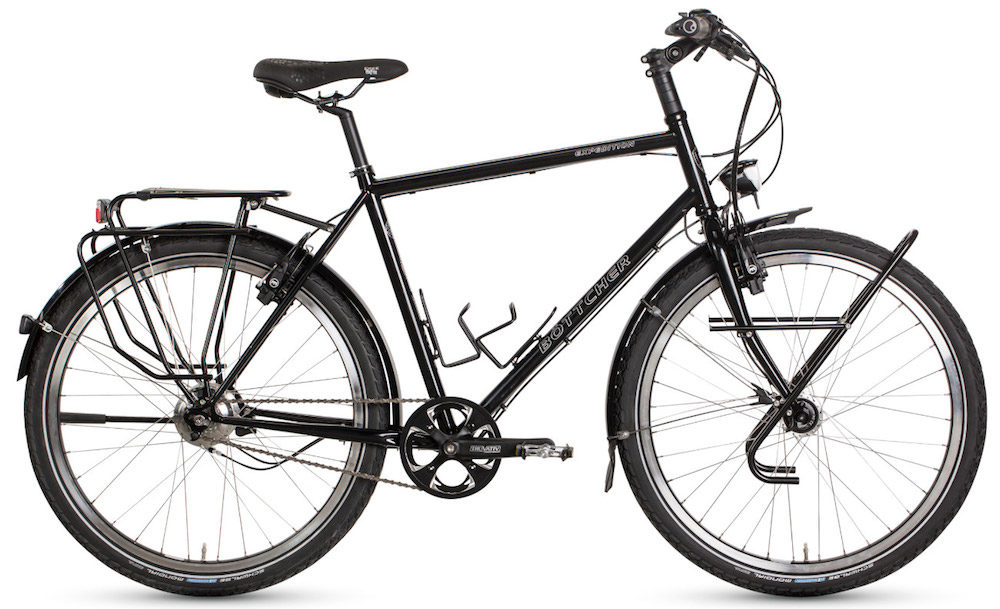





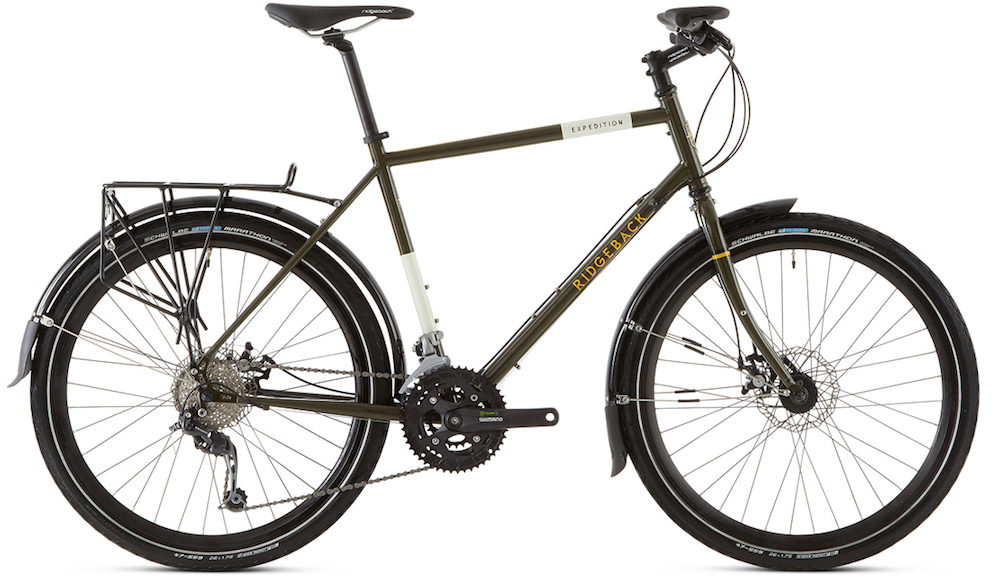





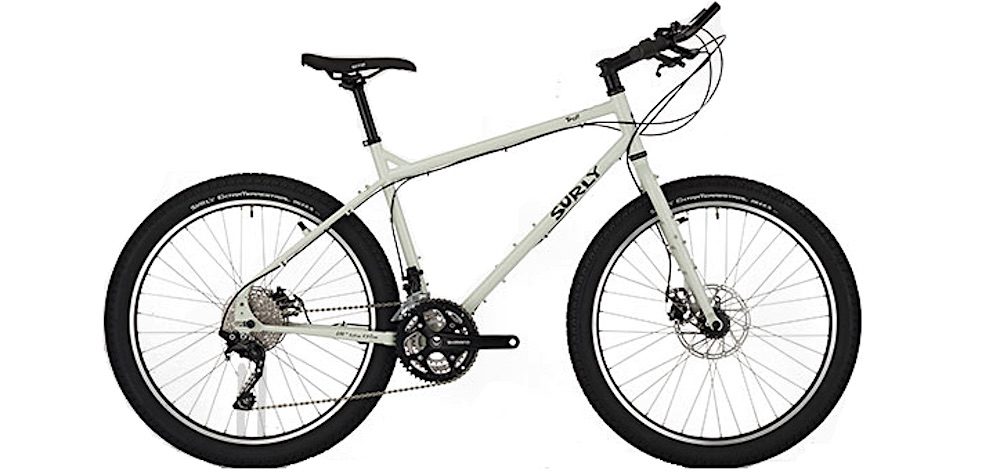







Other Bike Lists On CyclingAbout:
Complete List of Touring Bicycle Manufacturers
Complete List of Tandem Builders and Manufacturers
Complete List of Touring Bikes Available in Australia
List of XS Touring Bikes for Smaller Cyclists: 42, 44, 46cm
List of XXL Touring Bikes for Taller Cyclists: 62, 63, 64cm



What about front shocks? The great divide seems to be very front shocks friendly
Thanks for the compilation. Very useful since I’m more off-road oriented and most touring bike lists are focused on the “rugged” but not quite “off-road” models
As an off road tourer for 200km+ days in the saddle, here’s what I like:
2″ tires
-700c diameter
-Drop handlebar
-Chain drive for reduced cost
-Mechanical disc brakes for reliability
-Relaxed, relatively up right geometry for comfort and ease of seeing nature/scenery
-Basically a Salsa Fargo but titanium or carbon to reduce fatigue (this year is steel only)
After all, Salsa no longer makes the titanium fargo and there are only so many cutthroats, as Salsa was putting out the feelers.
Anything else and it just isn’t comfortable or performing enough for an ambitious rider where fatigue, climbs and speed are concerned. Just want to see more drop bar 29ers for touring.
Thanks for sharing your list!
I’m glad it has helped. 🙂
Hi Donnieboy.
With an off-road touring bike, frame material is going to make bugger all difference to vibration damping, comfort, speed and climbing. Almost all of the comfort and damping will be attributed to your tyres, seatpost, saddle and bar tape. Check out my piece on seatposts here: https://www.cyclingabout.com/seatposts-overlooked-yet-critical-for-cycling-comfort.
If you’re loading your bike up super light, you MAY notice the ~1000g weight difference between a carbon Cutthroat and steel Fargo frame. However, once you add gear, water and food to a bike, a kilogram is almost unnoticeable. If I were you, I’d not rule out the 10+ steel/aluminium options unless you’re REALLY counting grams across your full set up.
Alee
I know what you mean Alee. Size is greatest, touch points are second greatest and materials are next. Will be climbing ALOT. Difference will be about 8 percent of rig without water.
I did the math on 4300km of riding the continental divide trail. The verdicts in! Assuming there is frame flex that loses just 5% power, there is 215km less traveled – which puts me almost a day behind the front. This is why pros need stiff bikes. The rest of us who aren’t pros or don’t aspire to push ourselves physically and mentally don’t care – or rather, shouldn’t care. Now, if you’re going to generalize by saying most people don’t need the extra stiffness, I would agree with you. But do we all do the same things with our bikes?! The answer to what is the best bike for someone, is only apparent to one who is smart enough to ask the questions to uncover the bike’s intended usage in conjunction with a mind that can differentiate specifics within industry specific knowledge. Or just not bother.
Hi Donnieboy.
Your maths doesn’t add up. There is no direct correlation between frame flex and speed; it’s not that simplistic. In fact, many believe that some frame flex is faster than none at all (have a read of Jan Heine’s blogs on frame stiffness).
For Tour Divide here’s some things that are going to be more important: bike position (being more aerodynamic, as well as efficient on the pedals), comfort at your connection points, rolling resistance of your tyres and overall setup weight, including you. But all that will be trumped by what’s going on in your head. 😉
Alee
I don’t care enough to get into the level of detail that might satisfy a perfect argument for you to compare with your cut and paste link from Jan Heine – I might read it though – seen the site before. When argued correctly, you’re always right! You’re welcome to attempt the math on unknown dynamic parameters if you’d like to suggest rather than attempt to discredit! My point is that material weight matters when you climb the altitude of everest 6 times by bicycle. When you apply power through the frame on a loaded bike with torsion, there can be lateral flex that detracts from forward movement. There is also the weight. There are costs to the body; calories spent, water lost, micro nutrients out of the skin, and general body fatigue. That means I need to stop more for services, which can mean less adaptability to a changing ecosystem (weather) and means the person in the lead is further away. That is one of the reasons racers use carbon. That is all I need to know when it comes to MATERIAL selection for a frame. Notice I make no mention of geo or fit. Does that make sense to you? I don’t need a tutorial on trade offs of rolling resistance, aerodynamics/cycling position, fit and touch points. I ride slightly less than a pro and am an industry pro. I’ve been through the frame geo, fit song and dance on many bicycles, which is why I mentioned nothing about it in my post about frame materials. It puts me to sleep. I talk about what I need to and am usually self aware enough to know what I actually do or if not, to ask for it. Good luck to you in your forum and I am grateful for the selection of bikes you have shown on your touring bikes pages. Cheers!
I’d love for you to shoot through any studies that demonstrate that lateral frame flex detracts from forward movement. I can’t find any.
In my experience, the benefit of using a carbon frame over a steel or aluminium – weight. If I weighed 80kg and my bike/gear/water for Tour Divide was 20kg, the difference in total weight between steel and carbon would be 1%. With those numbers, and without any wind, temperature or elevation change – I’d expect the extra kg to conservatively add 30-60 seconds per 1000m of climbing. All those seconds obviously count given the 61000m total climbing, but it’s not as much as you’d think.
Have a play with http://bikecalculator.com/ if you haven’t already. It’s pretty fun!
Alee
Did Lao-China trip with my daughter on 20 inch foldie
how confident are you that the mazama can take 2.2 tires? i’m interested in getting one, but i cant find anything from REI to back that up.
It can clear 700×45 with fenders. Without fenders I’d suggest that 55mm tyres are possible. I’d shoot REI an email if you’d like to know more.
thank you. btw, this post is so great. its an awesome bicycle category and there is nothing else on the internet that covers it this thoroughly.
Not a problem. I try my best to create good cycling content that is unavailable anywhere else!
Maybe I can add one? the Dutch Avaghon X-29:
http://www.avaghon.nl/leveringsprogramma/avaghon-x29
WOW nice List, but i miss my Velotraum :-*
Thanks Alee!
This is what I’ve been looking forever! Also, maybe look at a new bike this year (i think) Giant ToughRoad, maybe more of a do-it-all kind of bike but it has some good clearance, and options for a lot of storage.
Hi Alee, others.
would be very curious to hear the vews between a Surly disk trucker, and Soma Wolverine based similar component setup.
I’m considering going for long loaded tours starting in europe and eventualy venturing out to central asia etc.
Your views would be highly welcome.
There are a few key differences between the bikes, but in general the Soma kind of bridges the gap between cyclocross and touring. It’s a shorter and quicker handling bike than a traditional touring bike.
Key differences:
Steering – The Surly has a higher ‘trail’ which makes the bike’s steering a bit slower. More trail tends to handle heavy loads at speed a bit better.
Chainstay Length – The Soma uses a 425-445mm chainstay compared to 460mm. This puts the rear pannier weight further behind the rear axle on the Soma than the Surly, resulting in slightly less desirable handling. With short chainstays, there can also be issues with people with large feet striking rear panniers.
Handlebar height – The Soma is a bit longer and lower in the front end, providing a more ‘performance’ fit than a touring fit. That said, you can bring the bars closer/higher by using a shorter stem and headset spacers.
Frame tubing – I don’t know for sure, but I’d hazard a guess that the Soma uses lighter weight tubing on the Wolverine given it’s a bit of an all-rounder bike. That will likely result in a less-stiff frame, and a lower ideal carrying capacity.
The more similar model in the Soma range is the Saga Disc, which is super similar to the Surly on paper in terms of handling and specification.
Thanks a lot Alee
It seems then that the soma wolverine is more of a cross then suited for touring. I was initially interested in the wolverine due to the possibility to upgrade to rohloffs in the future – for long loaded tours.
What would you suggestion/view be in regards to going with deraileurs now and rohloff at a later point in time?
I love my Rohloff – you wouldn’t ever see me going back! 😉
If you didn’t want to compromise the frame geometry, check out the Specialized AWOL and Salsa Marrakesh. Both Rohloff compatible and available off-the-shelf with a derailleur drivetrain.
Would you strongly recommend not using the Wolverine frame? I see you use the Surly LHT frame… how did you convert it to use Rohloff? Dont you need extra mechanics to tension the belt?
I actually quite like the surly frame’s horizontal top tube.. as against the AWOL’s … its tricky geting the look and geometry right with addition for rohloff extension…
Don’t get me wrong, I think the Wolverine is a fantastic frame. Just be aware of its limitations as a dedicated touring bike.
I used a custom frame builder to modify my LHT to accept a belt. He installed sliding Rohloff dropouts to tension the belt. It was very costly, but at the time, there were almost no belt-drive touring frames available.
Hi Alee,
i shall like to use it to commute to work most of the year all weather. thats the easy part. Also want to take a few tours ranging from small
long-weekend tours 300-400km to maybe a longer 10 day 1000km or so tour too… nothing in the ranges of 10000km yet on the horizon… so lets say for tours maxing at about 2000km but 90% being 300km – what would you say?
When people say long tours.. i always wonder whats “long”:) and how frequent i guess is the question…
You have the Salsa Deadwood incorrectly labelled as the Marrakesh…
Thank you – fixed!
I notice that the bike picture for the Specialized AWOL and the Tout Terrain Tanami are the same…
I am wondering tho which model of the AWOL that is?
Weird. My version of this page shows the correct image for the Tanami!
That’s the 2015 Specialized AWOL Elite. I’ll be updating this resource shortly.
That is weird!! I’m using Chrome for iOS… Just checked out Safari and it shows the correct image for the Tanami…
I like the color on that 2015 AWOL more than the 2016 version
Hi Alee
A friend of mine has twisted my arm to join him for a cycling trip from alaska to patagonia and wants to do a substantial amount off road. I’ve read about a few options, the surley lht but I wonder how good it is off road, the tout terrain looks nice but I haven’t seen reviews from people who’ve taken it through the Americas, and the thorn nomad looks sturdy but I see that you mentioned it’s not available in Australian stores. Wondering if you’d have any recommendations for a trip like this and if there’s a good store in Sydney where I can test some out?
Kind regards, Pete
Hi Pete. It’ll be best to find a bike with 2.0″+ tyres for a long distance trip from Alaska to Patagonia. In Australia you’ll find the Surly Troll, Surly ECR, Surly LHT (26″), Kona Big Rove, Tout Terrain Silk Road, Salsa Marrakesh and Salsa Fargo. I’d recommend calling/emailing SCV imports, St Kilda Cycles, Groupe Sportif and Dawson Sports Group for your best place to check out the product, but the reality is that you may not be able to test ride something in your size before you buy it. If you need help with comparing bikes, I have a new book available by the end of the month that will take you through all of the important stuff to know, then you can turn to the bike listing section at the back to compare sizes, steering speed, gear ranges and more! Keep an eye out – I can’t wait to get it out there. Alee
I am wondering what bike you would recommend for a month touring Iceland. I would be using the ring road as a base route then straying from it for more adventurous days here and there, I am very much more of a flat bar MTB rider than drop bar bikes although I am open to suggestions. I was thinking maybe a 29er with gravel tires on might be sufficient, any input would be much appreciated thanks, Nathan
Hi Nathan. I think you’ll be really happy with a flat bar touring bike! The tyres are going to be the most important factor at play for this kind of tour, as you’ll need to trade off between road speed and off-road grip. Try and work out how many days will be spent of gravel as a percentage, and go off that. A tyre that is fast through the middle, but with a few side knobs tends to be a great choice. I use the folding Schwalbe Marathon Mondial pretty regularly for this kind of thing. Alee
Thanks Alee for the quick response will look into the route more and figure out the best options.
The Saga Disc is now the Saga DC — with both provisions for both disc and cantis. It doesn’t have sliders, but can probably run Rohloff (chain drive) with a chain tensioner. And the sizing goes up to 66cm
Thanks for the update, Stan.
Any thoughts on Masi Giramondo 2016?
Thank you so much for all of the info! It is so hard to find a good bike just by looking through sellers online! There are so many crappy bikes with really high prices in the u.s.! I was looking into the montague folding bike 2016 models, but now I am reconsidering because I was having trouble finding good reviews on the components, and the few good touring reviews that I found said the components were bottom of the line, the cheapest they could get. I don’t want a bike falling apart while I am touring. I wanted a folding bike because at the moment, I am on a semi truck with my mom who is a trucker, and a folding bike is pretty much the only option for now. I can also hitch hike more easily if I need to when touring and also get picked up by friends in different parts of the country when I want to visit them or even take my bike to a different country when I want to leave (thinking about going to Costa Rica). It just seems so much more functional. I love the frame of the montague bikes, but I can’t have the bike falling apart on me all of the time and I can’t really afford to replace most of the components. I know they sell the frames separate, but they are so expensive, I don’t think I can afford to put together that frame and high quality components as well. I will figure it out eventually. For now I am just trying to save up as much money as possible for a good bike that can go on all terrain and preferably some off roading as well(being on the roads which are unfriendly to bikers in the u.s. next to the horrible drivers is not optimal and definately not prefered).
Isn’t the Surly Ogre Rohloff compatible as well? The Surly site says it is and it is basically a Troll with 29ers.
It sure is!
You should update your article, I was a little worried there for a second.
Outstanding web page. One of a kind. Very well done. Thank you.
Thanks very much, Billy!
Updated. 🙂
Excellent, the best, not found on any other site. Two minor remarks: Idworx, not Id Worx; Poison, not Poisen.